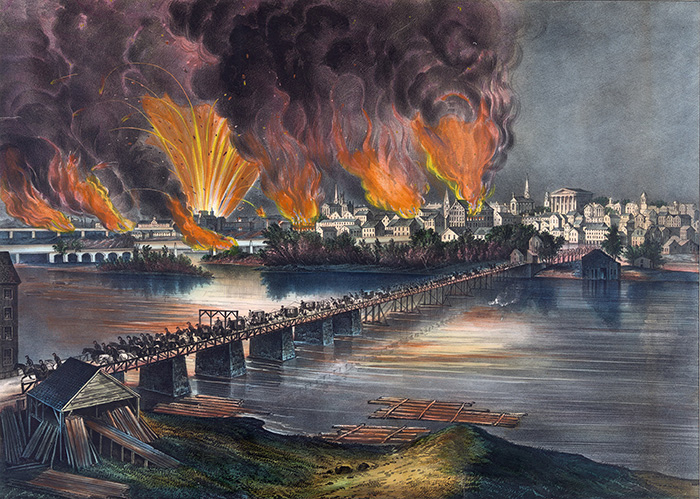 ”
”
In the face of advancing Union forces, Confederate troops evacuated Richmond, Virginia, the capital of the Confederate States of America during the American Civil War.
The fall of Richmond during the American Civil War on April 2, 1865, marked a pivotal moment in the conflict, signifying the collapse of the Confederate government’s stronghold in the South.
As Union forces pressed their advantage, the Confederates faced mounting pressure, culminating in the decision to evacuate the city. General Robert E. Lee advised President Jefferson Davis to initiate the evacuation as Union troops routed Confederate forces at Five Forks and launched a general assault at Petersburg. With the impending threat, Confederate troops destroyed bridges and set fire to warehouses along the waterfront to prevent Union capture of supplies, under the orders of General Richard Ewell.
Amid the chaos of evacuation, law and order disintegrated, leading to widespread disorder and looting by mobs within the city. Although the fires were not ignited until early on the morning of April 3, the fire department was unable to contain the rapidly spreading flames due to the overwhelming circumstances. Fueled by strong winds, the fires engulfed the warehouse district along the waterfront, posing a grave threat to the city’s historic fabric.
Union troops, sensing the unfolding devastation, advanced into the city from the east on April 3, organized into marching order with bands leading the way. As they entered downtown Richmond, they encountered the chaotic scene of a frenzied mob amidst the raging fires. Despite the intense heat and smoke, Union soldiers pressed forward, ultimately reaching Capitol Square, where they took possession of the Capitol building and rallied to fight the fires. Despite the widespread destruction, the efforts of Union troops managed to save several significant buildings around the square, including the War Department offices and the Capitol itself, designed by Thomas Jefferson.
In the aftermath of the city’s capture, enduring myths emerged surrounding the events of April 3. Contrary to popular belief, Union troops did not start the fires but rather worked diligently to extinguish them upon entering the city. Additionally, while the destruction along the waterfront was significant, much of the city, including most of downtown, remained largely untouched by the devastation. The image captured by a photographer at the corner of 14th and Main Streets, depicting women walking amidst the aftermath, serves as a poignant reminder of the resilience of the city amidst the turmoil of war and its enduring legacy in American history.









